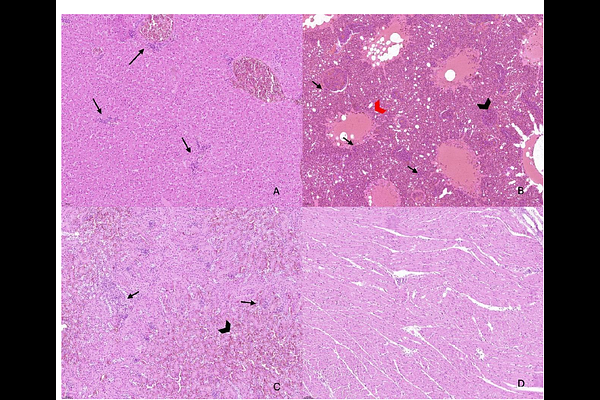First report of Photobacterium damselae subspecies damselae in Razorbill (Alca torda)

First report of Photobacterium damselae subspecies damselae in Razorbill (Alca torda)
Minichino, A.; Lucibelli, F.; Guardia, T.; Balestrieri, R.; Aceto, S.; Vaccaro, E.; Dipineto, L.; Sapio, M.; Santaniello, A.; De Luca Bossa, L. M.; D Alessio, N.; Fioretti, A.; Borrelli, L.
AbstractA razorbill (Alca torda) was found dead in Bacoli, Italy, on January 16, 2023, during an exceptional irruptive event. The bird, a young female weighing 800 g with a moderate nutritional status and no external traumatic injuries underwent a post-mortem examination, which revealed coelomitis with severe congestion of the liver, lungs, kidneys, and myocardium. Lung, liver, kidney, and heart samples were collected for microbiological and histopathological analyses. Bacterial isolation on blood agar showed the growth of spherical/ovoid colonies after 48 hours, consistent with the Photobacterium genus. Identification by MALDI-TOF MS and PCR confirmed the presence of Photobacterium damselae subsp. damselae (Pdd), supported by 16S gene sequencing and detection of the ureC gene. PCR screening for virulence factors identified the hlyAch gene in lung samples, suggesting a potentially pathogenic strain in avian species. Histopathological examination showed severe, inflammatory infiltrates and widespread hemorrhages in the liver, the lung tissue and kidneys. In the myocardium, mild and multifocal lymphocytic infiltrates were present. These findings suggest a significant role of P. damselae subsp. damselae in the observed lesions. The results of the study revealed a new cross-species transmission of this potential zoonotic bacterium and the need for further research in this field.